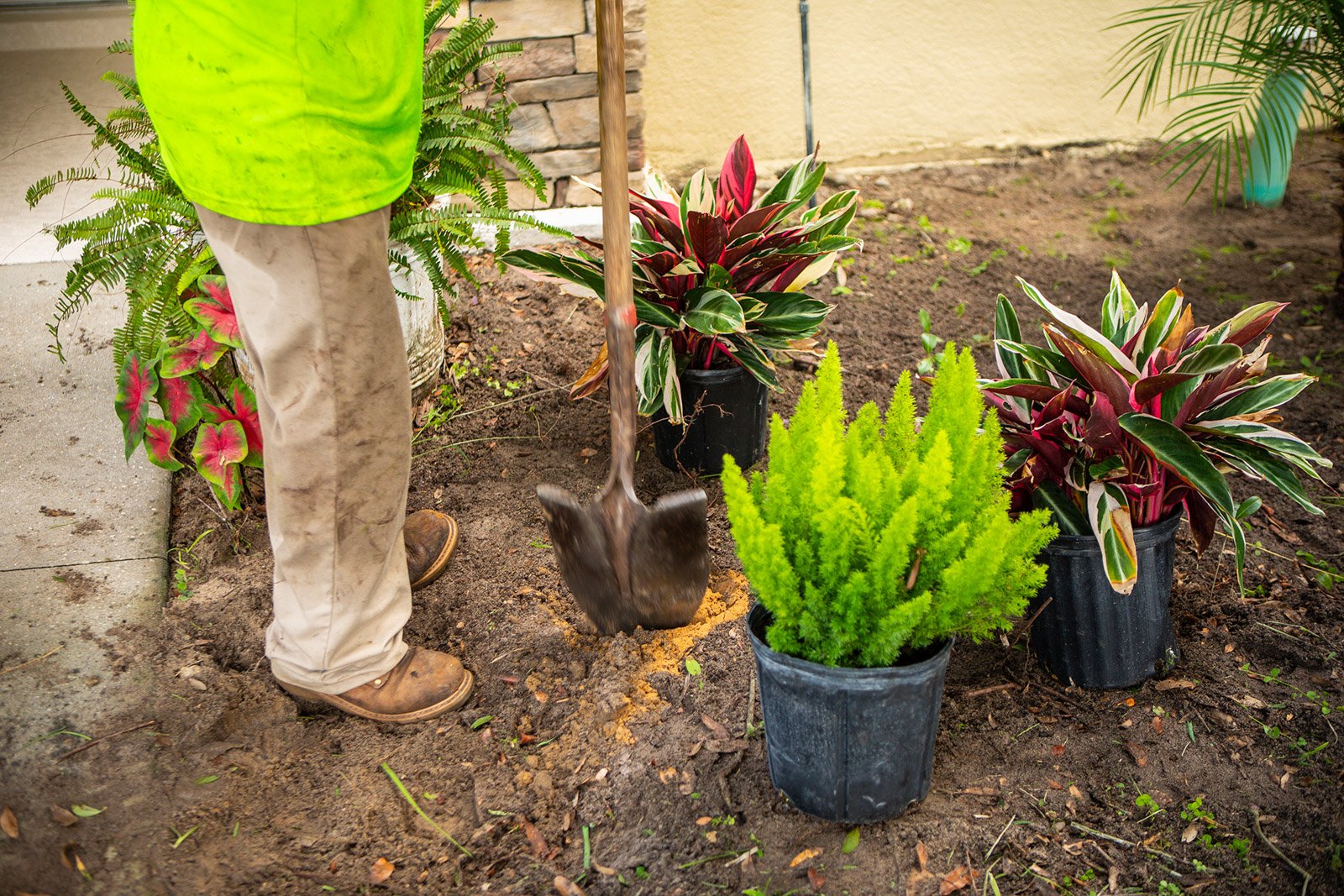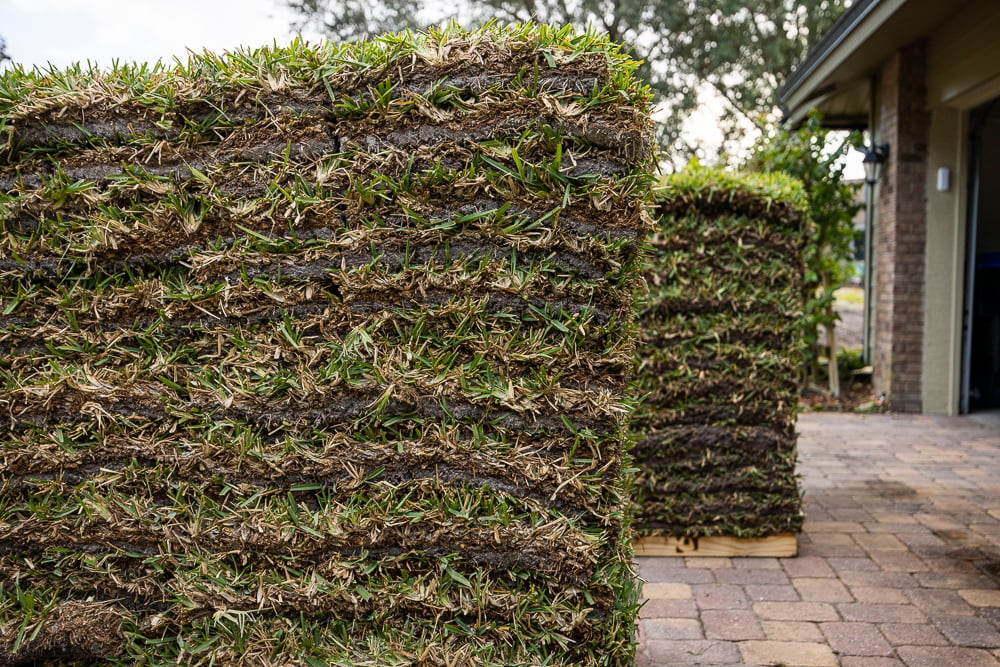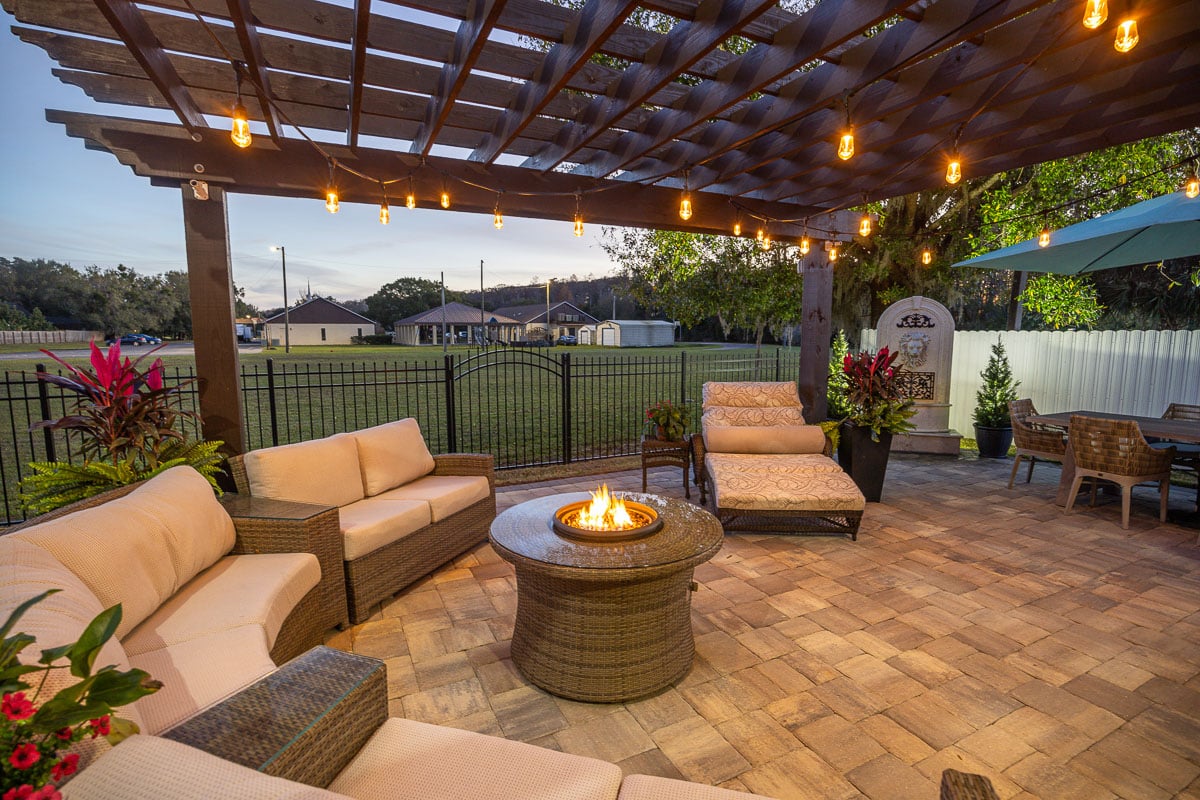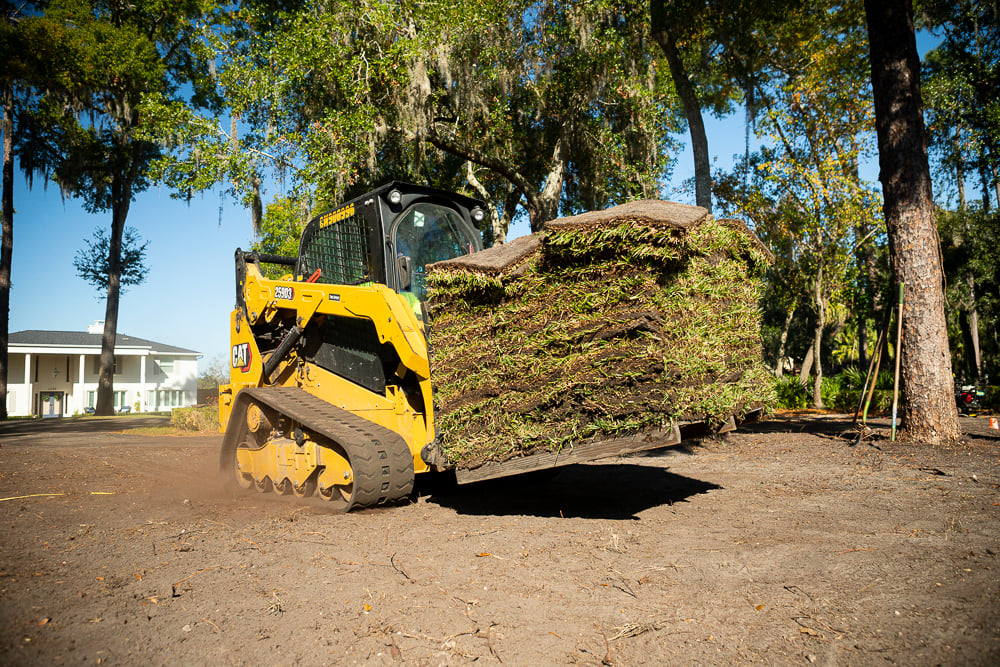When you get a beautiful new sod lawn, it kind of seems like magic, right? Especially if you’re not home during the installation.
It’s like some sod fairies showed up, waved a couple wands, and woo hoo — instant lawn!
Not exactly.
A lot of work, care, and persistence goes into the sod lawns we install. We happen to be really picky about where it comes from and how it’s grown.
Here’s how it really happens.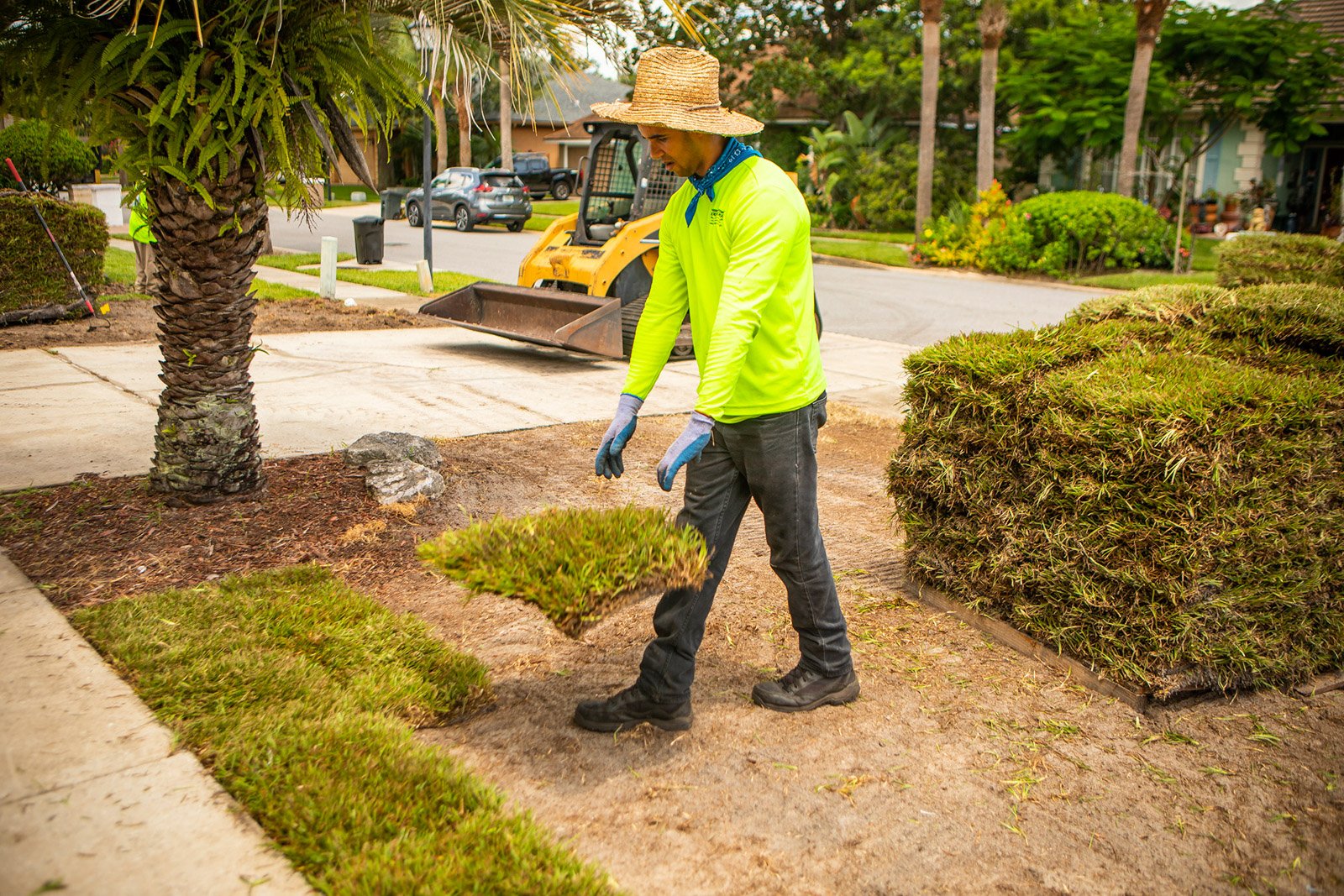
1. The Prep Work
How is sod grown? It all starts with the right growing conditions.
Sod farms have work to do before they even plant the grass seed.
They till the soil so it’s nice and fluffy, and take out any rocks. They add compost so the soil has all the nutrients the sod will need to thrive.
Then, another tilling to mix in that compost.
2. How Sod is Grown: Planting — and Waiting
Now that the soil is ready, it’s time to plant.
We work with sod farms that use high-quality grass seed. Not all seed is the same. Lower quality seed might actually have weed seed mixed in.
Then, the waiting.
It can take up to two years before the sod is ready to harvest. Quality grass takes time to grow thick and healthy.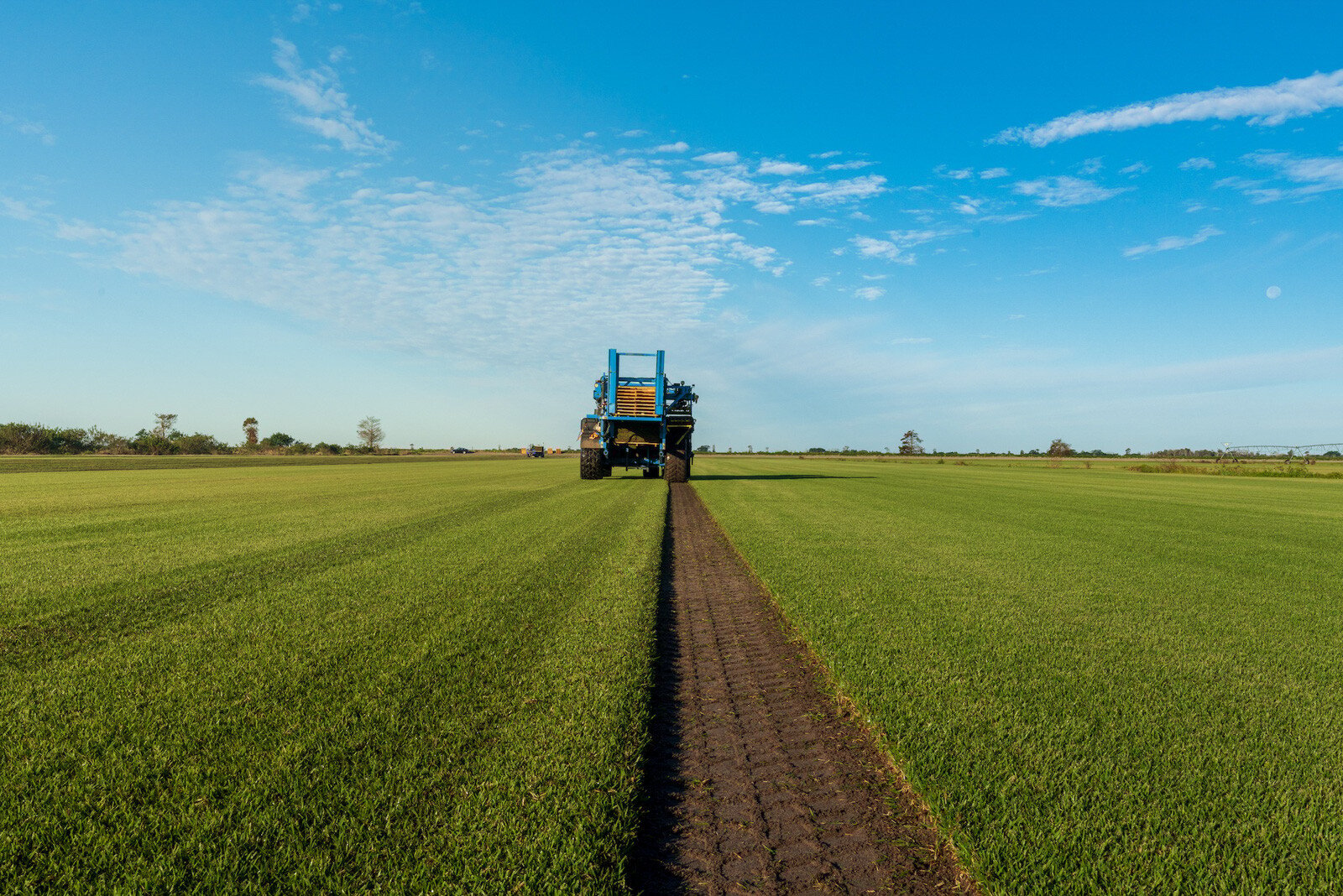
3. Meanwhile, Painstaking Care
Now, the hard work of precise watering, fertilizing, pest control, weed control, and mowing. It’s a lot of work, if it’s done right.
Proper fertilization early on means your sod will be healthier, more drought and disease resistant.
Fertilizer also improves the color of your grass and helps it recover from stress — like the stress of being uprooted and transplanted to your yard.
Quality sod starts early, including the use of the right insecticides and fungicides to keep bugs and diseases from attacking.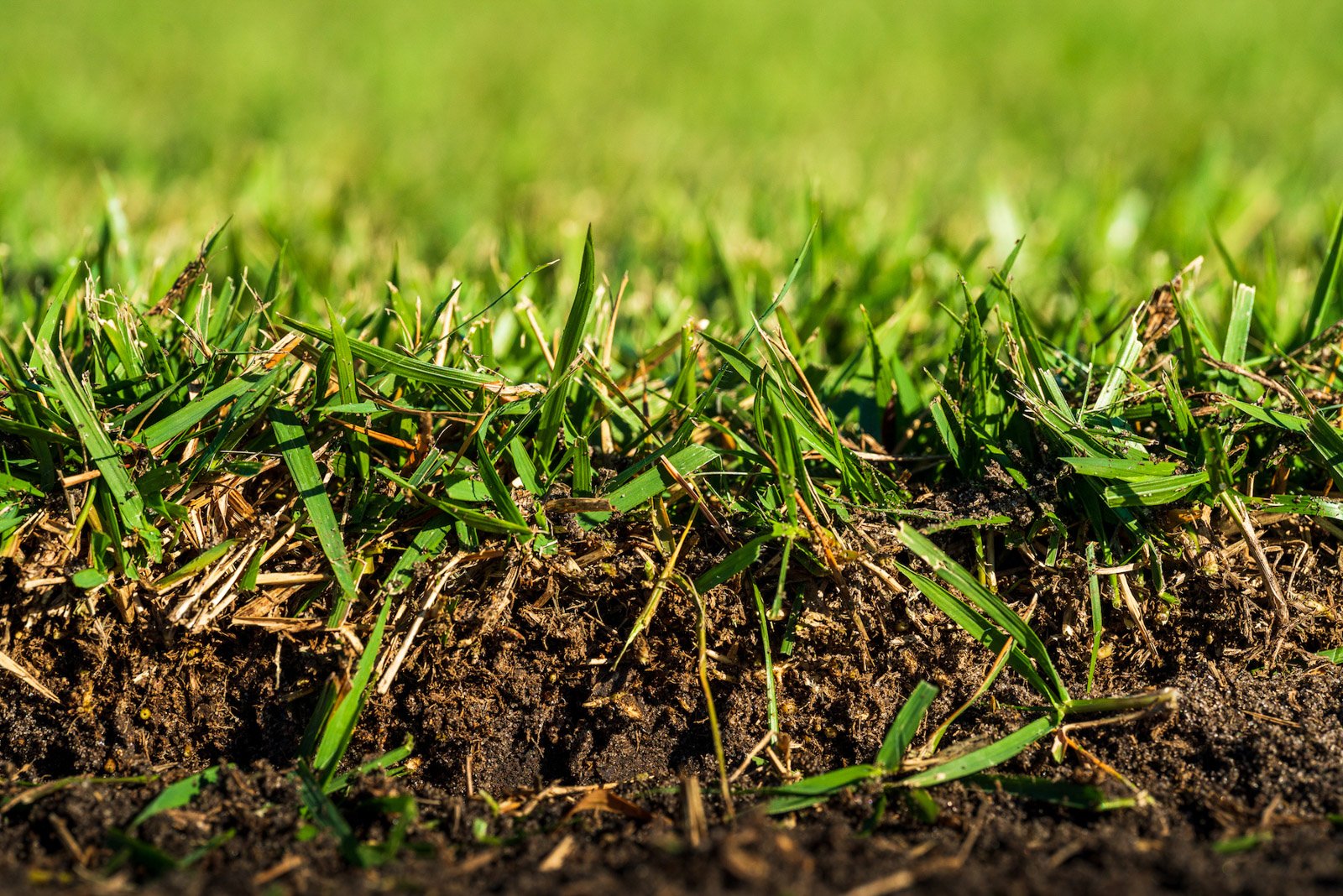
We’re especially concerned about sod webworms, ground-dwelling caterpillars that love feasting on grass. They can really destroy your lawn.
We only buy from sod farms that use an expensive webworm preventative, to keep the sod free of those summer-time damaging pests.
4. How Sod is Harvested
Here’s where it gets exciting — it’s almost time to bring it to your house!
When the sod is ready, farms harvest it using a cool machine that lifts strips of sod out of the ground and rolls it up into those tidy rolls you see.
They take not just the grass, but also a few inches of the attached soil and roots so it can make a healthy transition to your yard. 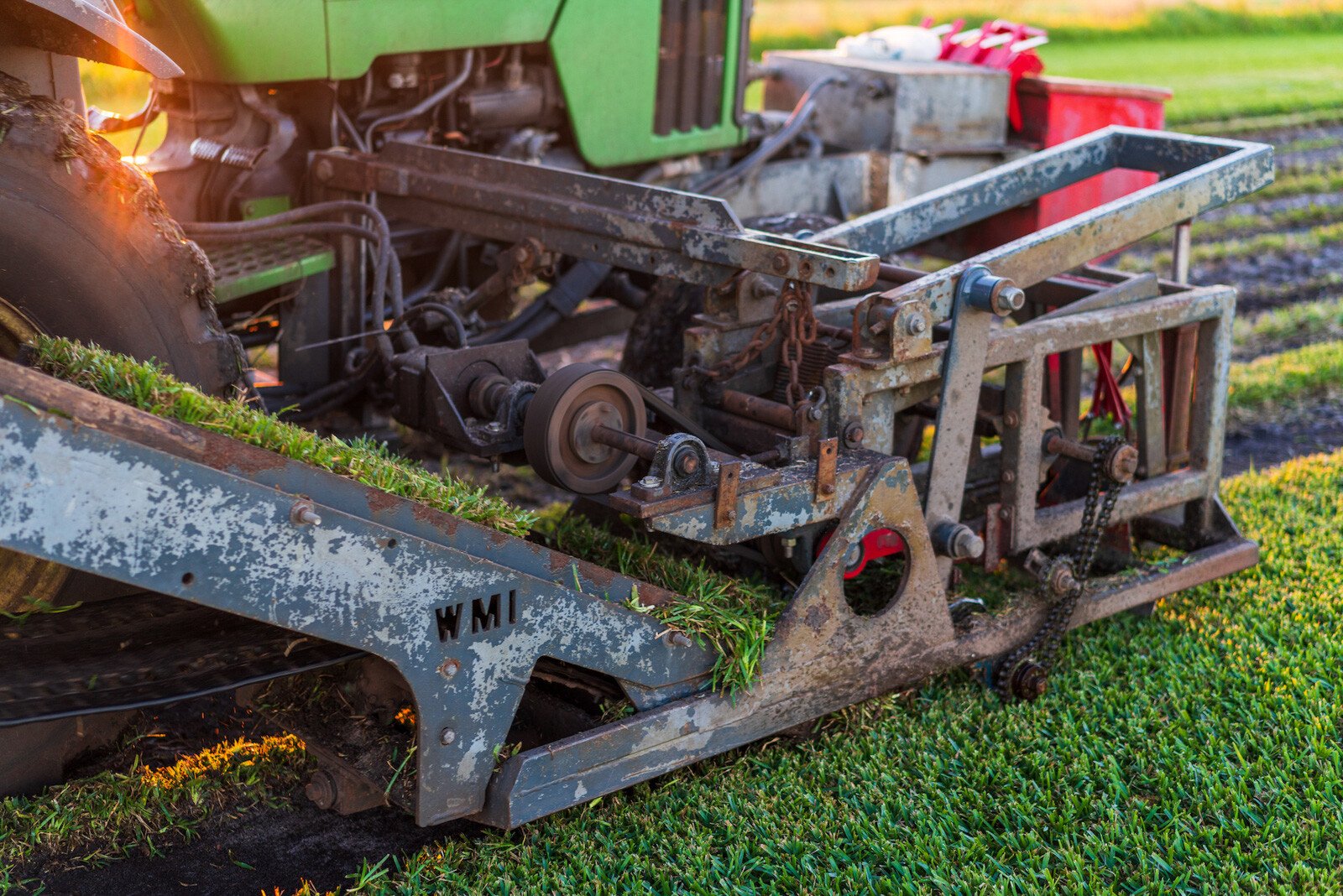
The sod farms we work with don’t harvest the sod until they have an order. That way, little time has passed between harvest and when it goes into your yard.
We pick up fresh-cut sod from the sod farm and bring it directly to your property.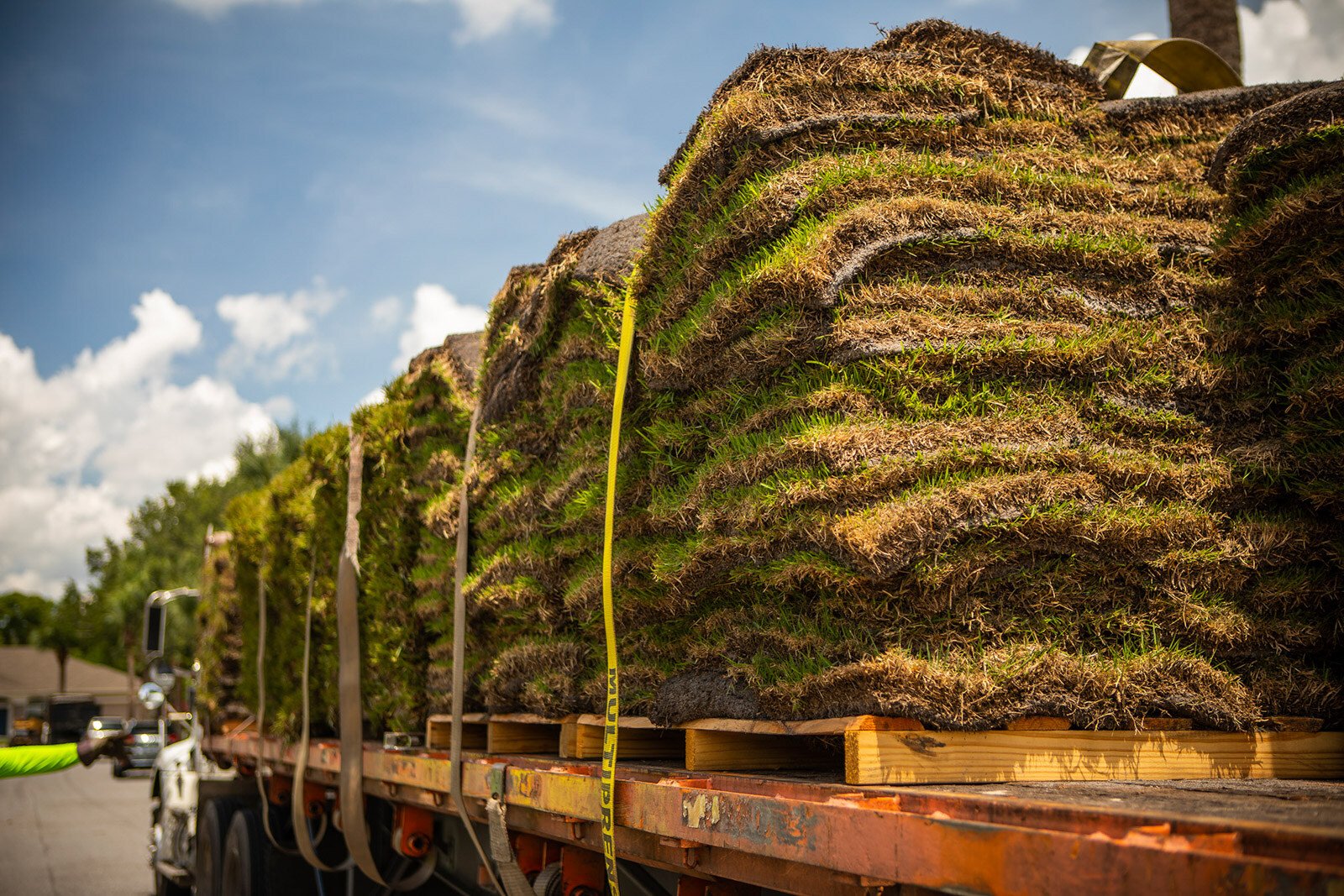
But that’s not always the case with other suppliers.
Some sod installers might store the sod overnight, or over the weekend, and water it to keep the top pieces green. When temperatures heat up the grass will become hot and diseased.
5. How Sod is Installed
Now, just roll it out and line it up, right?
There’s more to it than that.
First, your installer has to kill all your old grass, if your sod isn’t a brand new installation. 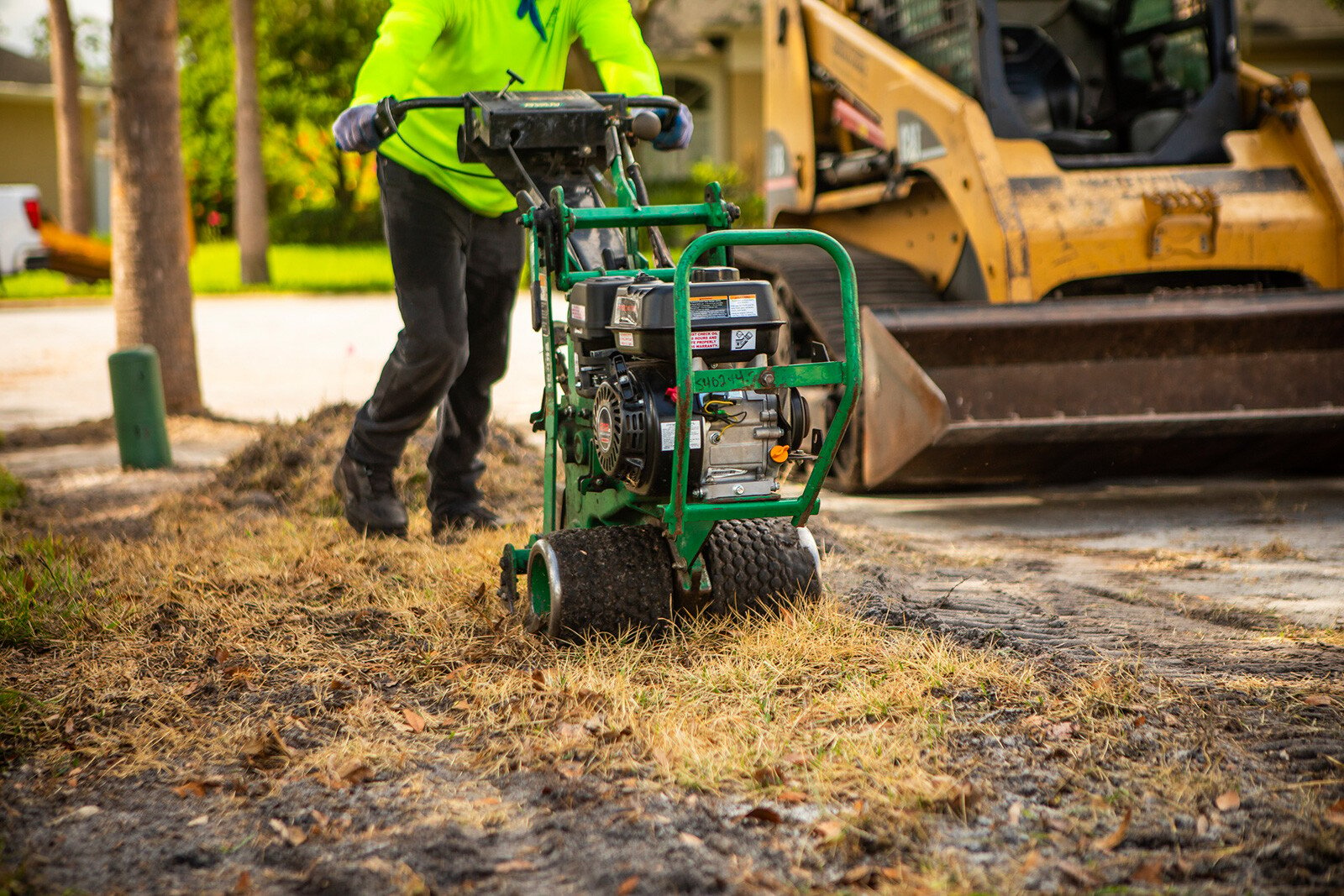
This step is super important, and it’s done a week or two ahead of time. If not done right, wild grass will grow up through your new sod.
Then, on delivery day, crews have to flag all irrigation heads, strip the area with sod cutters, and haul away all the old sod.
They need to level out any imperfections on your lawn, match up all the seams, fit the sod around obstacles like trees and walkways, then check and adjust all your irrigation heads.
Your sod should root in five to 15 days in the summer, and 20 to 30 days in the winter.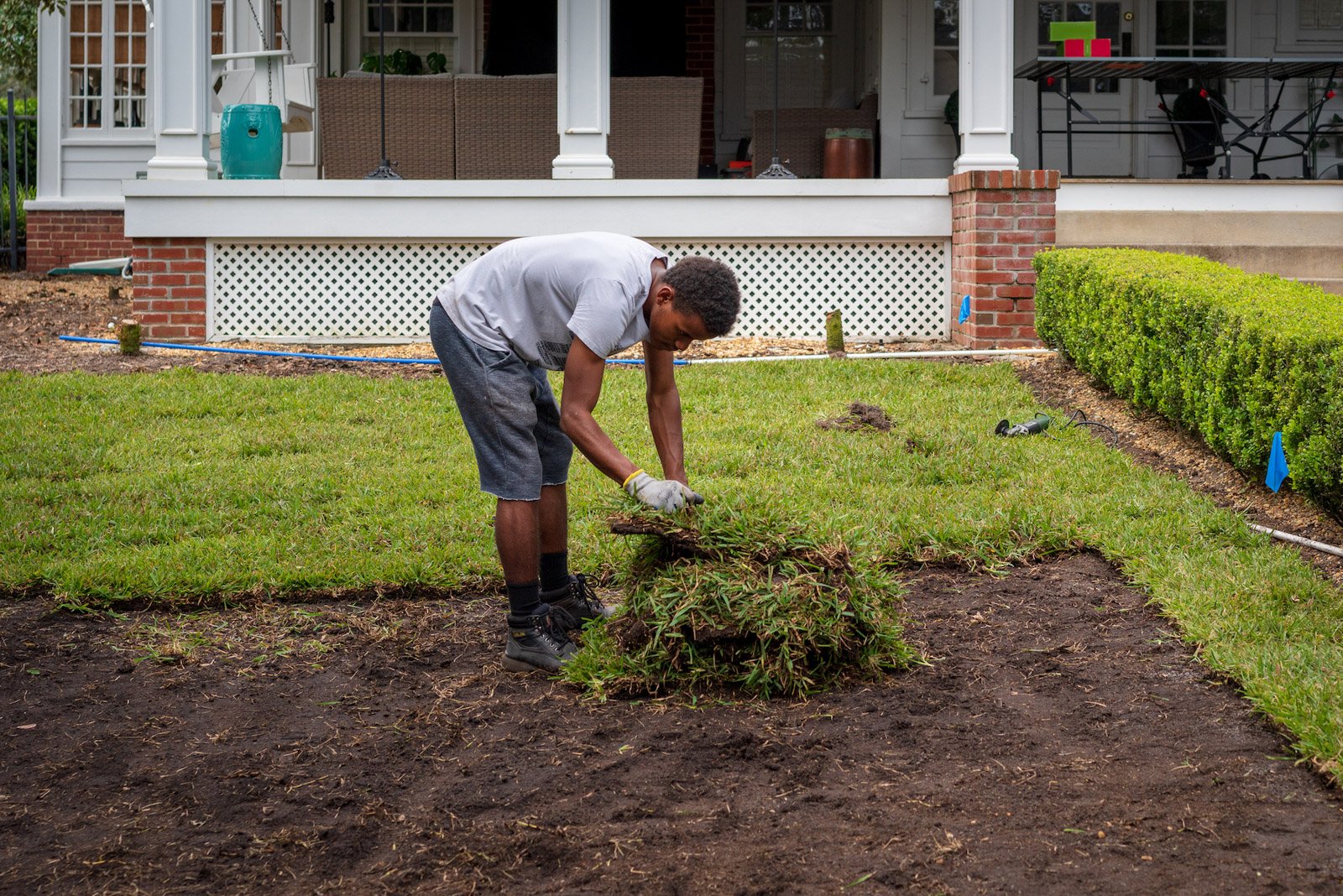
6. The Importance of After Care
Now, it’s up to you. Make sure you hire a sod installer that provides you with detailed instructions on how to care for your new sod. Most importantly, it needs plenty of water, but not too much. Fertilizer and insect control is part of new sod care, too.
7. Hire the Right Installer
Now that you know how all this works, you know some good questions to ask when you’re looking for the best sod installer.
Here’s another one: do they guarantee their sod?
Not every installer offers one, but we warranty sod for 30 days, provided we install it, during certain times of the year, as long as customers adhere to our post-care requirements, which include treatment with a starter fertilizer, an approved insecticide, and an approved fungicide, as well as following our watering instructions. Some restrictions apply.
Fresh from the Sod Farm to Your Yard: Trust Ground Source
You want the healthiest sod from the very beginning, for a successful start in your yard.
Trust us to find the best quality sod, then bring it quickly from the sod farm to your soil.
We’re sod experts, but our skills don’t stop there. We’re with you every step of the way as you plan your perfect outdoor space.
Sod, irrigation, landscape design: Let us transform your yard from an embarrassing eyesore to a place you spend every spare minute.
Are you ready to enjoy the vibrant, impressive yard you've always wanted? Request a quote today! We’ll help you review your options and then transform your property.






